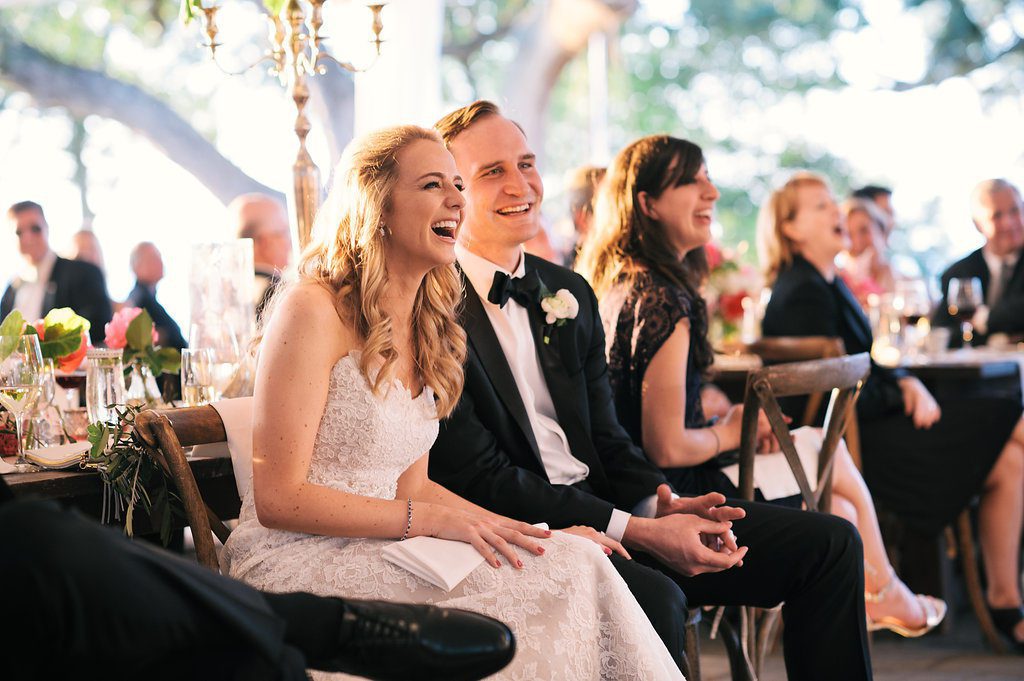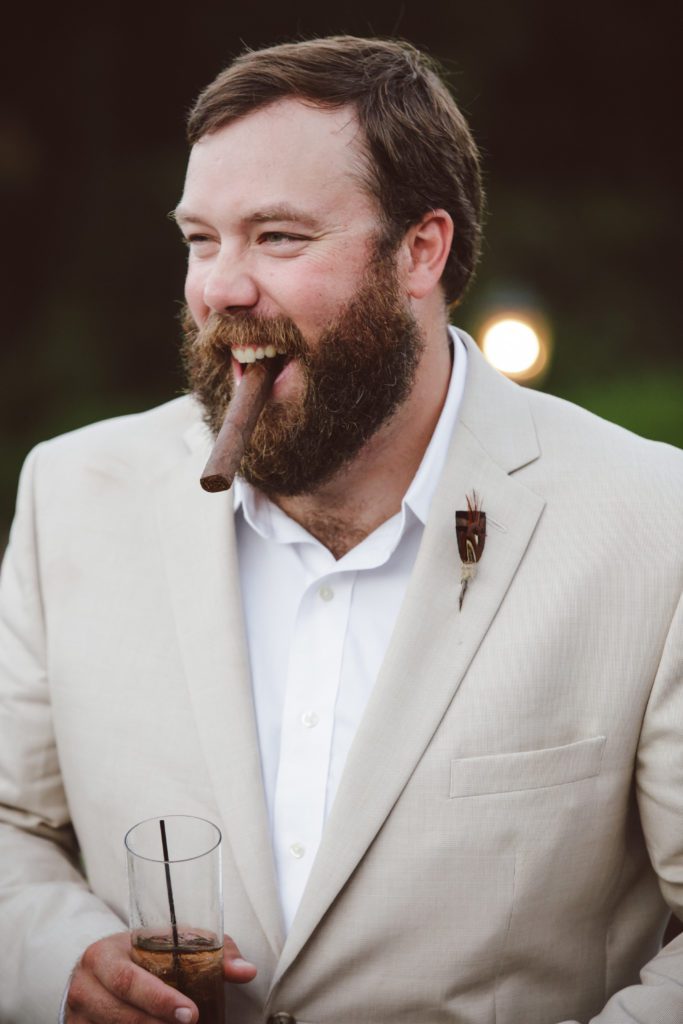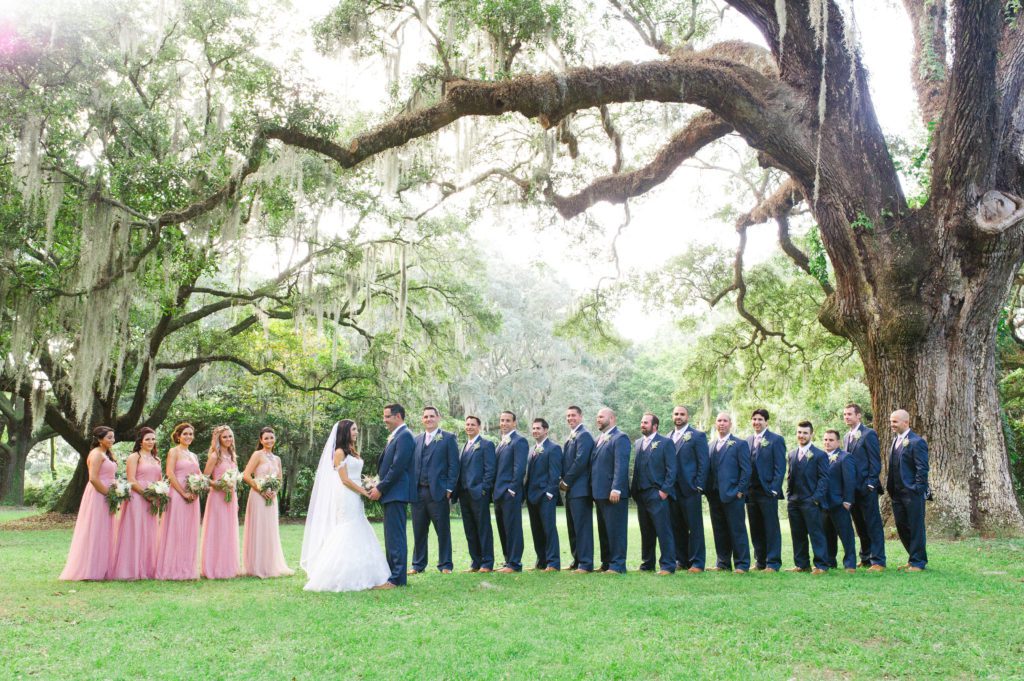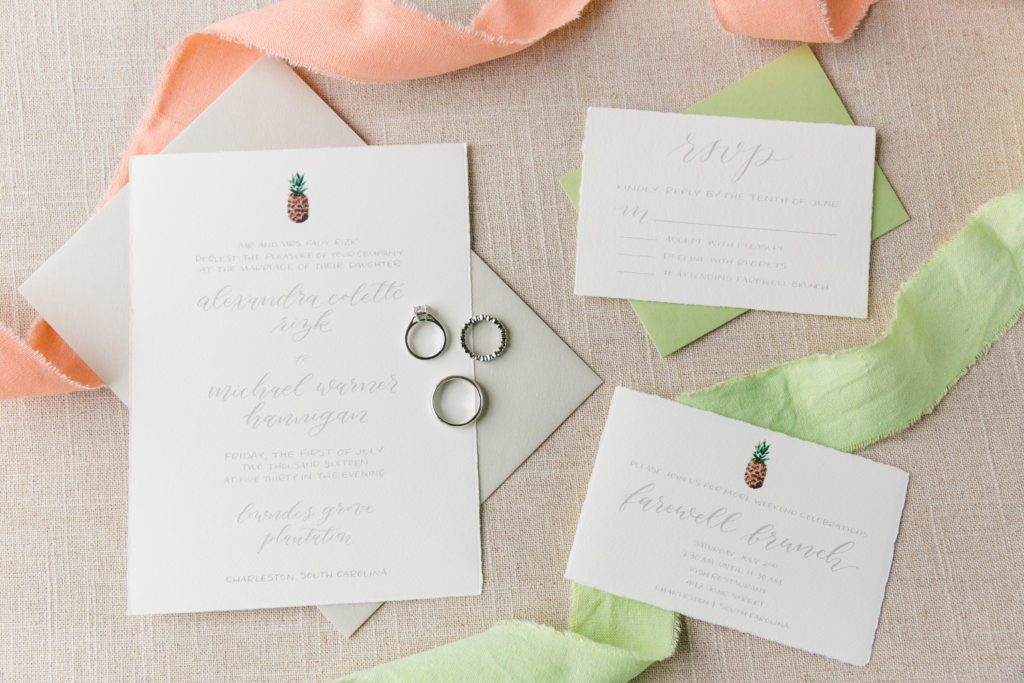
Invitations have been sent, all gowns, suits and tuxedos are in alterations and everyone is making arrangements for your big day. Now, your guests begin decoding the dress code for your wedding weekend. If you include pre or post-nuptial celebrations, that raises the stakes for the weekend’s attire.
Here, we offer some tips, considerations and translations for you, the honored couple, to share with their guests to complete your wedding vision.
Most commonly, the language used for wedding dress codes includes:

Black Tie
Black Tie means true formal attire. Men are to wear tuxedos and women wear long, formal gowns. This dress code is acceptable for weddings as early as 4 pm because guests will wear Black Tie into the evening hours. Women attending black tie functions often also seek professional hair and makeup services to complete their look.

Black Tie Optional
This clothing cue recognizes the formality tuxedos command, but does not require guests to attend wearing one. A formal suit and tie suffices for men, though a tuxedo is also a welcome choice. By the same token, women enjoy more flexibility with this option but still traditionally wear a formal, cocktail or tea length dress with a touch less grandeur. This style has been the most popular of late with fashion forward couples and Millennials.

Semi-Formal
When the soiree is more casual in style, semi formal should be your go-to. Gentlemen are still expected to wear a suit and tie while women lean more toward semi-formal cocktail attire. Semi-formal is recommended when the venue and setting are formal but outdoors.
Additional wedding events are also subject to dress codes, especially when there are a variety of venues being used. Most often, we recommend Dressy Casual, Seasonally Chic or Country Club Chic, indicating a collared shirt or an upscale sundress with proper footwear. These apply to the rehearsal dinner and welcome events such as a cocktail party or unique group activities. Post wedding brunch attire depends on the host venue or restaurant, though we recommend the aforementioned dress codes unless otherwise directed.
These four “Pro Tips” will help you define the dress codes you wish to request for your wedding.

Pro Tip #1: Share your dress code information in at least TWO places.
List your attire preferences on your formal invitations in the bottom right hand corner. The other place people look for style recommendations? Your wedding website. There, you can provide more specific information about the venue’s terrain and your wedding style. This invites compliance and clothing confidence for guests with varying levels of formality.

Pro Tip #2: Consider your location.
Black tie for an outdoor wedding in July is tough. We recommend considering the basic logistics of the venue or location as you plan. What time of day is wedding and/or reception? What are the average annual temperatures for your wedding date? What is underfoot? Each of these topics greatly impact how guests dress to achieve their preferred level of comfort, style and safety within the dress code parameters.

Pro Tip #3: Specify footwear
Women naturally default to heels for weddings; however, uneven grass, sand, gravel, forest floor or other surfaces are not ideal for stilettos or pumps. For men, luxury leather or tuxedo shoes can be destroyed by an unfriendly surface. Your wedding website is the best place to make a specific shoe recommendation, ie: “wedges or flats recommended for the venue’s grounds” or “The ceremony will take place on [ insert surface here ] and the reception will be [ insert secondary surface if needed ].” If you’d prefer NOT to tell guests about the surfaces where they’ll be, you could include a link to the venue on the website so guests can explore the grounds further themselves. While we don’t recommend flip flops at the ceremony or reception, a fun touch for a beach wedding offers cheap sandals to guests so to enjoy a walk on the sand, while not ruining any of the guests’ footwear.

Pro Tip #4: Consider the financial investment your guests are making to attend when choosing a dress code.
Black Tie preferences for a destination wedding or location that includes more traveling guests than locals, causes costs associated to mount. Determine your level of formality for the destination, keeping in mind the average amount your guests will spend to simply join the festivities, before defining attire. Not all men own tuxedos nor do all women factor in cost incurred for a gown, accessories, hair/makeup, and footwear. Just as there is a budget for the wedding by the hosts, your guests also have financial considerations.

Pro Tip #5: Your invitation should set the tone of your wedding.
Your invitation suite should represents the feel and style of your planned festivities. A formal invitation with hand calligraphy and letterpress would suggest a formal affair while an invitation with a touch of whimsy would suggest cocktail attire. As you define your vision for the celebration, associate style of your celebration with the overall look of your invitations.
Give your guests the best chance to impress in proper attire by effectively communicating dress code considerations. A crowd full of appropriated dressed wedding-goers demonstrates a reverence to the celebrated couple, the hosts and the entire experience. Contact us today for a consultation about your wedding by calling 843-749-2807 or emailing info@ChristinaBaxterWeddings.com.